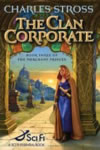One of the joys of blogging is that you never know what people will devour, and why. And -- with links -- it's never too late.

Guantanamo Study (2003)
Back in 2003, I wrote a post about our tendency to think that we face terribly complex problems while previous generations were fools.
I called it They weren't all fools, and decorated it with a modern-dress variant of Hiram Powers' famous statue of The Greek Slave, which I named Guantanamo Study. I thought it was an important political issue, wrapped around a useful critical observation: art, politics, media, and technology. Just the ticket for MarkBernstein.org .
Nobody particularly noticed.
No email, no fuss, no links, no arguments, no citations. OK. Next.

Hiram Powers,
The Greek Slave
Now, 30 months later, this image gets yanked out of the fishwrap. It's being viewed a few thousand times a month. (The site serves about 200,000 pages per month, but most of that's concentrated on new posts.) Right now, it's the 5th-ranked image for Guantanamo on Google.
Go figure.
The important lesson, though, is that links are the best way to keep old things discoverable, to give them time to find their audience.
Before you dismiss this as a porn-traffic artifact, please take a moment to think about the way Power's statue helped create the whole idea of 'white slavery', and the way it argued for the Graeco-Roman West against the Ottoman East while also arguing for the urban North against the slave-holding, agrarian South. Not to mention the role the female body plays in the contemporary religious-political debates, or the fact that the prisoners at Guantanamo turn out to include kids who, apparently, were sold to the U.S. by feuding Afghan leaders.
(The experiment in Fagerjordian linking does seem to be effective. For example, another 2003 post, on barbecued ribs, got a fresh 100 readers via my recent note on Sally Schneider. The link apprentice in Tinderbox 3.5 makes these easy to discover...)







